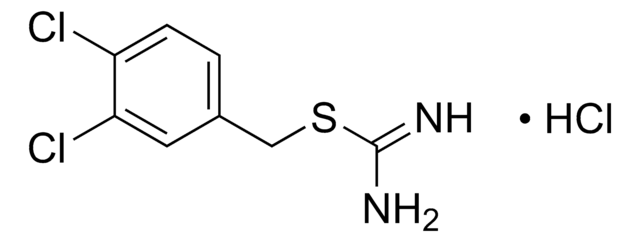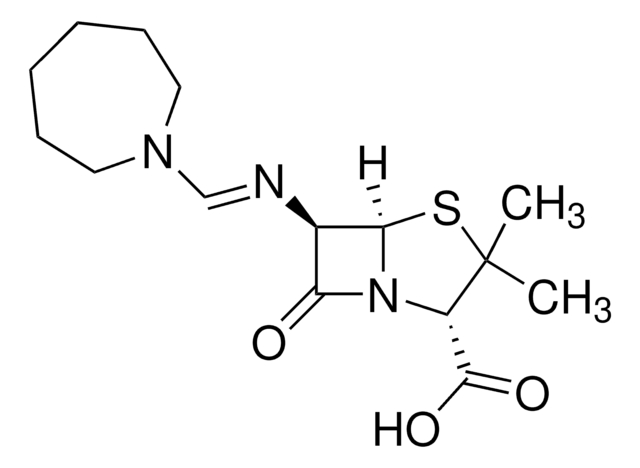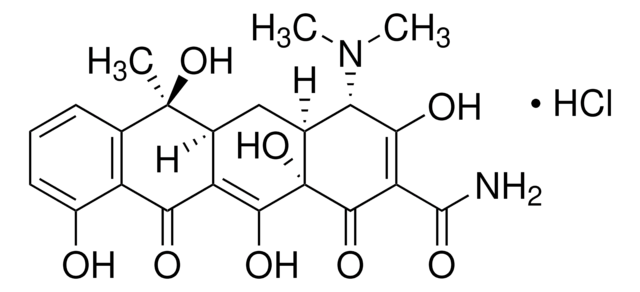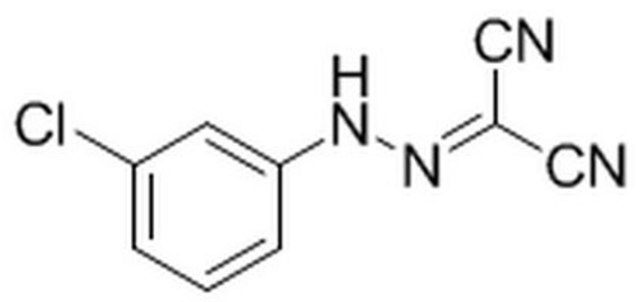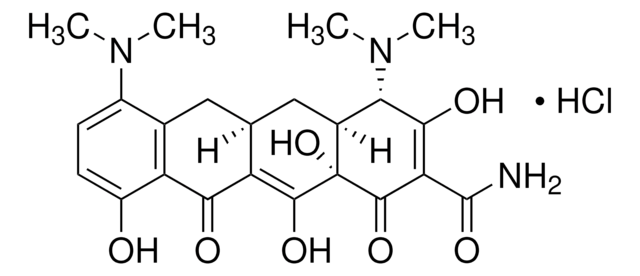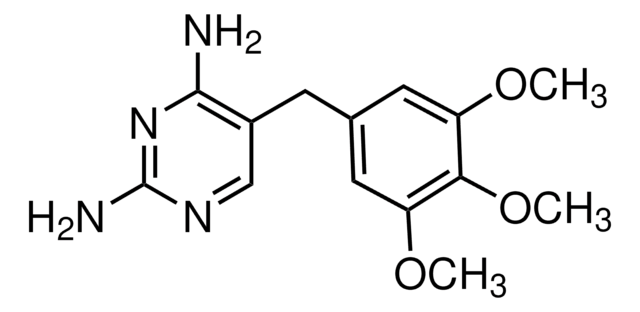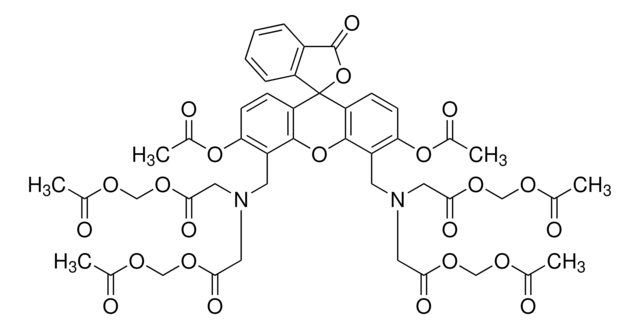475951
MreB Perturbing Compound A22
A cell-permeable isothiourea compound that specifically, rapidly and reversibly perturbs MreB function without affecting eukaryotic actin polymerization.
Synonym(s):
MreB Perturbing Compound A22, S-(3,4-Dichlorobenzyl)isothiourea, HCl
About This Item
Recommended Products
Quality Level
Assay
≥95% (HPLC)
form
solid
manufacturer/tradename
Calbiochem®
storage condition
OK to freeze
desiccated (hygroscopic)
protect from light
color
white
solubility
water: 2 mg/mL
DMSO: 200 mg/mL
shipped in
ambient
storage temp.
2-8°C
SMILES string
S(Cc1cc(c(cc1)Cl)Cl)\C(=N\[H])\N.Cl
InChI
1S/C8H8Cl2N2S.ClH/c9-6-2-1-5(3-7(6)10)4-13-8(11)12;/h1-3H,4H2,(H3,11,12);1H
InChI key
VBJNMXMOMSWRDV-UHFFFAOYSA-N
General description
Biochem/physiol Actions
MreB
Packaging
Warning
Reconstitution
Other Notes
Jensen, R.B., et al. 2002. Nat. Rev. Mol. Cell Biol.3, 167.
Iwai, N., et al. 2002. Biosci. Biotechnol. Biochem.66, 2658.
Legal Information
Storage Class Code
11 - Combustible Solids
WGK
WGK 3
Flash Point(F)
Not applicable
Flash Point(C)
Not applicable
Certificates of Analysis (COA)
Search for Certificates of Analysis (COA) by entering the products Lot/Batch Number. Lot and Batch Numbers can be found on a product’s label following the words ‘Lot’ or ‘Batch’.
Already Own This Product?
Find documentation for the products that you have recently purchased in the Document Library.
Our team of scientists has experience in all areas of research including Life Science, Material Science, Chemical Synthesis, Chromatography, Analytical and many others.
Contact Technical Service